Charleston Currents | Aug. 31, 2015 | Number 7.42
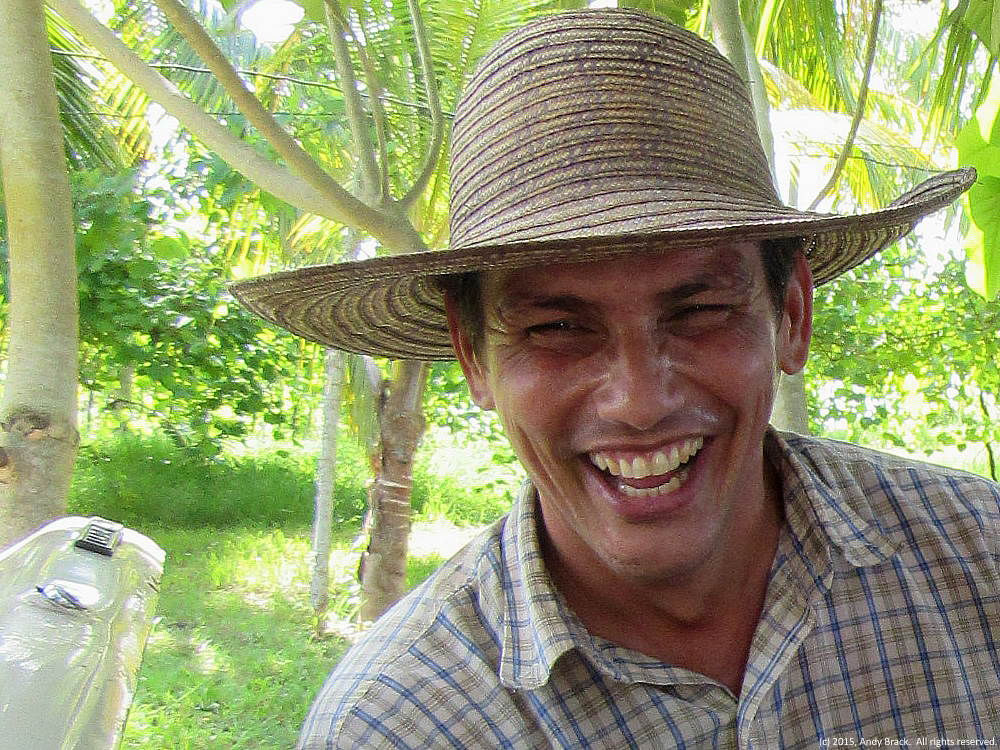 Agronomist Fernando Funes of Cuba left the classroom to start a small organic farm and apiary west of Havana, Cuba. Charleston Currents’ editor and publisher Andy Brack spent the last few days in Cuba as part of an agricultural and cultural trip organized by Magnolia Plantation and Gardens. Learn more about the country in him commentary below. You also can see more photos below in a special “Faces of Cuba” photo essay.
Agronomist Fernando Funes of Cuba left the classroom to start a small organic farm and apiary west of Havana, Cuba. Charleston Currents’ editor and publisher Andy Brack spent the last few days in Cuba as part of an agricultural and cultural trip organized by Magnolia Plantation and Gardens. Learn more about the country in him commentary below. You also can see more photos below in a special “Faces of Cuba” photo essay.
IN THIS ISSUE
FOCUS, Kyra Morris: Don’t panic about market’s fluctuations
BRACK: Cuba faces big changes in thaw with U.S.
IN THE SPOTLIGHT: Charleston RiverDogs
PHOTO ESSAY: The faces of Cuba
GOOD NEWS: New Avery Center exhibition, more
FEEDBACK: Letters on race, ostracism
CALENDAR: Aug. 31+: Lots of music and fun
REVIEW: Hausfrau: a novel, by Jill Anderson
MYSTERY: Rabbits or snails?
S.C. ENCYCLOPEDIA: Early S.C. gardens
TODAY’S FOCUS
Don’t panic about market’s fluctuations
By Kyra Morris, contributing editor
AUG. 31, 2015 | Ten days ago, the DOW fell more than 500 points. Then on Monday, August 24, the DOW fell again another 500 points. By Tuesday, August 25, it looked like the DOW was on an upswing, but then in the last hour of the day it fell and closed again down more than 200 points. Whoa! Then … here comes Wednesday and Thursday with a rebound that was one of the best two-day percentage gains in more than six years. What’s happening and what will be next?
 Most financial professionals doubt that this will be a repeat of the 53 percent drop experienced from October 2007 until March 2009. Why – what’s the big difference? The lack of a real negative economic event like we had back then makes this different. There are no collapsing housing bubble or over-sold mortgages. The reality we are facing is an interest rate hike.
Most financial professionals doubt that this will be a repeat of the 53 percent drop experienced from October 2007 until March 2009. Why – what’s the big difference? The lack of a real negative economic event like we had back then makes this different. There are no collapsing housing bubble or over-sold mortgages. The reality we are facing is an interest rate hike.
The current economic figures will be available in next Friday’s jobs report. This will give us more information about the strength of the U.S. economy. Car sales, construction spending, the Federal Reserve’s “beige book” and jobs growth will be in the report. This may show the economy is strong enough to withstand the first rate hike from the Federal Reserve since before the crash. This rate hike may be imminent despite worries about a hard landing for China’s economy.
The second quarter gross domestic product and solid durable goods figures had a stronger-than-expected revision. If the data next week come in strong, it could be fodder for a rate increase next month. There is a mindfulness regarding the fact that the Chinese slowdown could interact with U.S. companies negatively especially during the remainder of the year. Thomson Reuters data show third-quarter earnings expectations have dropped 6.4 percent for the industrial sector and 8.8 percent for the materials sector since July 1.
 The volatility in the global stock markets may continue. If third- and fourth-quarter earnings are undermined because of the China slow down, then stock price fluctuation is likely. A large percentage of American corporation’s balance sheets and profits depend on being able to maintain a customer base overseas – and in China. American cars and luxury goods need to sell in global markets.
The volatility in the global stock markets may continue. If third- and fourth-quarter earnings are undermined because of the China slow down, then stock price fluctuation is likely. A large percentage of American corporation’s balance sheets and profits depend on being able to maintain a customer base overseas – and in China. American cars and luxury goods need to sell in global markets.
The interrelation with global markets over the next two quarters may not be enough to dissuade the Federal Reserve should next week’s data show the U.S. economy continues to slowly improve. It is still a question though, yet to be answered. If it were not for the dramatic market volatility over the last two weeks, it would be fair to say that a rate move of 25 basis points (0.25 percent) is expected.
Although the largest economy in the world should be able to handle this rate move, it still may be the impetus for a market correction. A 10 percent to 15 percent correction, though not fun, is also a fairly normal occurrence in market cycles. Since 1946, there have been 31 instances of a 10 percent decline. A 10 percent decline does not automatically mean a bear market which by definition is a 20 percent drop. In fact, just 12 of the 31 instances lead to a bear market.
The recent decline seemed so much more because
a) the numbers are larger – a 500 point drop correlates to only around 3 percent market drop at these DOW levels, and
b) it’s been more than 47 months or nearly 4 years since we’ve experienced a 10 percent correction. This is the third-longest span in market history.
The positive experience in the markets over the past several years was also during a time the U.S. government provided stimulus. The stimulus ended last October 2014. U.S. companies did not collapse and the economic data continues to show relative strength. The environment is ripe for a rate increase. A rate increase creates jitters by investors. Jitters create volatility. A positive thought about volatility is that volatility creates opportunity.
What should you do with your portfolio? First, be careful about giving into the normal human behavior that sells low and buys high. This is emotional and reactive and does not make for a good investment outcome. Second, take stock – excuse the pun – and fine tune your existing strategy. The recommendation is not to change your allocation that is in stocks or bonds, but perhaps to change the stocks and bonds within the allocation. Third, if you have cash, this may bet the time you’ve been waiting for to invest again. Fourth, do not panic.
Kyra Hollowell Morris, a Certified Financial Planner, is CEO of Morris Financial Concepts, Inc., in Mount Pleasant. A national leader in the financial planning profession, she has been named several times by leading magazines as one of the country’s top financial planners. Have a comment? Send to: editor@charlestoncurrents.com.
COMMENTARYCuba faces big changes in thaw with U.S.
By Andy Brack, editor and publisher
HAVANA, Cuba, Aug. 27, 2015 | In dozens of ways, Cuba isn’t ready for the prime-time expectations of a projected tidal wave of Americans unfettered by decades of travel restrictions.
 Yes, these new yanqui explorers to the 776-mile-long island south of Florida will be able to smoke smooth Cohiba cigars, drink potent mojitos and see shiny 1950s Chevys, Fords and Plymouths powered by a hodge-podge of Russian, American and Chinese engine parts.
Yes, these new yanqui explorers to the 776-mile-long island south of Florida will be able to smoke smooth Cohiba cigars, drink potent mojitos and see shiny 1950s Chevys, Fords and Plymouths powered by a hodge-podge of Russian, American and Chinese engine parts.
But they’ll also find a country trying hard to come back from decades of decay to mile after mile of noble colonial buildings, Neo-Classical gems and ugly, pre-fabricated Soviet-era cubes. Most American’s will not be ready for the dearth of air-conditioning, Internet service or clean toilets that work. They’ll find two different currencies — one for Cubans and another for tourists — as befuddling as the maddening hours of hurdles required to make a simple call from a pay phone to South Carolina. They’ll marvel at generally clean streets and sidewalks, but wonder about why they’re crumbling and pocked by potholes.
And then there’s the ever-present heat that will make older Americans recall when they grew up and younger ones wonder how anyone can live in a country where glass in windows is the exception, not the rule. It’s common here for front doors and shutters to be open in grand, neglected buildings and in small, squalid shotgun-type houses in the rural areas where peasants watch television in the dark in the daytime to keep from using electricity.
Today’s Cuba is stuck in the past for two big reasons. First, a 1959 revolution turned the country into a socialist state that nationalized private enterprises. It insulated itself to provide free education, health care, housing and food to teeming hordes of peasants. Second came an American embargo in the early 1960s that failed to cause Cuba to democratize. But it did kept the island, once the playground of millionaires and the mafia, from looking much different from its rich neighbor to the north. These days, Cubans live in a time warp without McDonald’s, WalMart and the consumer choices that Americans take for granted.
Soon after you get off a plane at the small Jose Marti airport west of this city of 2 million, you’re told to drink lots of bottled water to keep hydrated and ward off the debilitating effects of ever-present humidity that leeches moisture from your body. Night or day, everyone has an omnipresent sheen — what polite Southerners call a “glow” — of perspiration.
What you quickly encounter driving around Havana is mile upon mile of benign neglect of once grand buildings, often stained brown and black with grime. The whole city needs a good pressure washing. Along the Malecon seawall that stretches for miles along the coast along the north coast, clothes may dry on makeshift lines in open windows of a worn, once grand 19th century edifice. Juxtaposed next door may be a renovated Baroque building that could be in Charleston and where well-heeled diners enjoy the view of the sea.
There’s a thick feeling of anticipation in the old tourist part of Havana. You can see it in people’s eyes — “the Americans are coming.” It seems to fuel the new sidewalks, re-bricked streets and renovations to churches and old buildings. Vendors selling books, trinkets, T-shirts and leather goods offer warm smiles and greetings about how they love Americans.
After spending more than a week in Cuba with a group from Magnolia Plantation and Gardens, it’s easy to wonder whether thawing relations with the United States will actually improve Cuba or change it into something that becomes just another Caribbean experience. It’s pretty neat, for example, not to be assaulted by billboards and advertising images at each corner. While Cubans appear to be able to access CNN, Weather Channel, sports and Disney, it’s clear Cuba’s current and future leaders have a challenging task — whether they can modernize but protect the island from the over-commercialization that helped to fuel the revolution in the first place.
Andy Brack is editor and publisher of Charleston Currents and Statehouse Report, where this commentary first appeared. Have a comment? Send to: editor@charlestoncurrents.com.
IN THE SPOTLIGHTCharleston RiverDogs
 There are only three remaining home games for the Charleston RiverDogs — tonight through Wednesday night, when there will be a final game, grand fireworks display.
There are only three remaining home games for the Charleston RiverDogs — tonight through Wednesday night, when there will be a final game, grand fireworks display.
The public spiritedness of our underwriters allows us to bring Charleston Currents to you at no cost. This issue’s featured underwriter is the Charleston RiverDogs. The Lowcountry’s leader in sports entertainment, Charleston RiverDogs baseball is an attractive, affordable medium for your group or business. The RiverDogs develop the next major league stars for the 27-time World Champion New York Yankees at one of the finest ballparks in Minor League Baseball — Joseph P. Riley, Jr. Park.
Three short words sum up the every day approach taken by the Charleston RiverDogs front office. The brainchild of club President Mike Veeck, the nine-letter phrase “Fun Is Good” is meant to be a guideline and daily reminder of how employees should approach their jobs and in turn capture the imagination of the fans to turn them into repeat customers.
- Visit the ‘Dogs online at: www.RiverDogs.com.
The faces of Cuba
Set aside political ideologies and international affairs. Cuba, at its heart, is defined by her people, a mélange of black, brown and white seemingly filled with a joie de vivre captured in quick smiles, infectious rumba and a welcoming spirit.
Here are several photos that show some of the faces of Cuba encountered during a nine-day August trip organized by Magnolia Plantation and Gardens. To see more photos, click here.
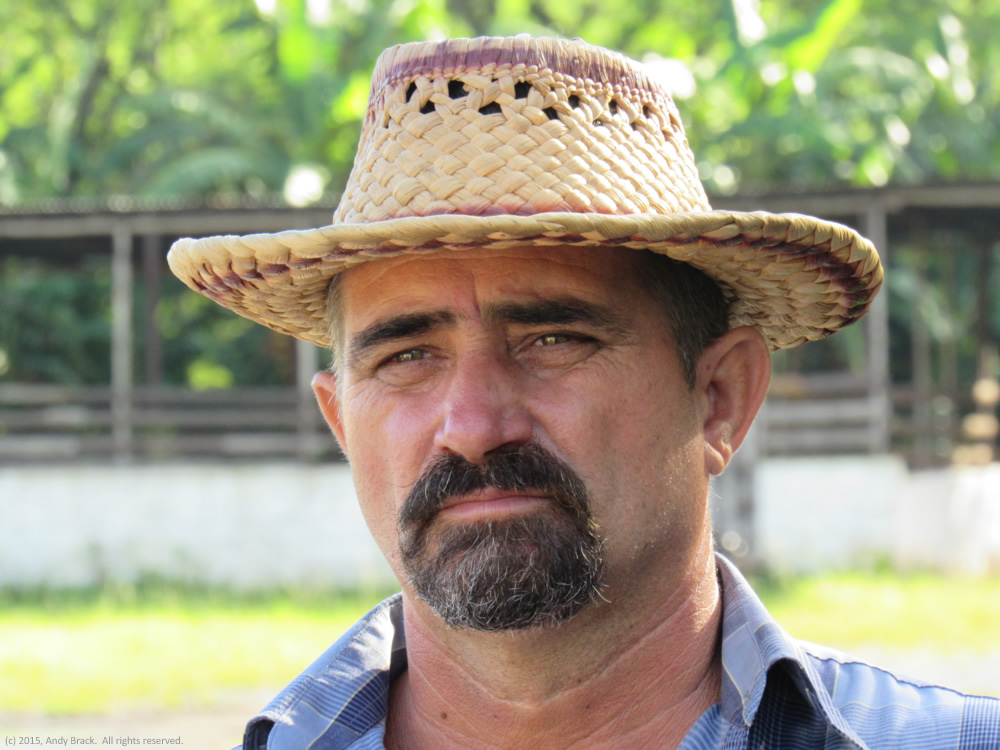
Rafael Barrios is production manager for the state-run El Moncada farming cooperative in western Cuba where more than 600 people work to harvest coffee and tobacco.

This young woman is a drummer and singer in a band that plays Afro-Cuban music at an art studio in El Callejon de Hamel in Havana.
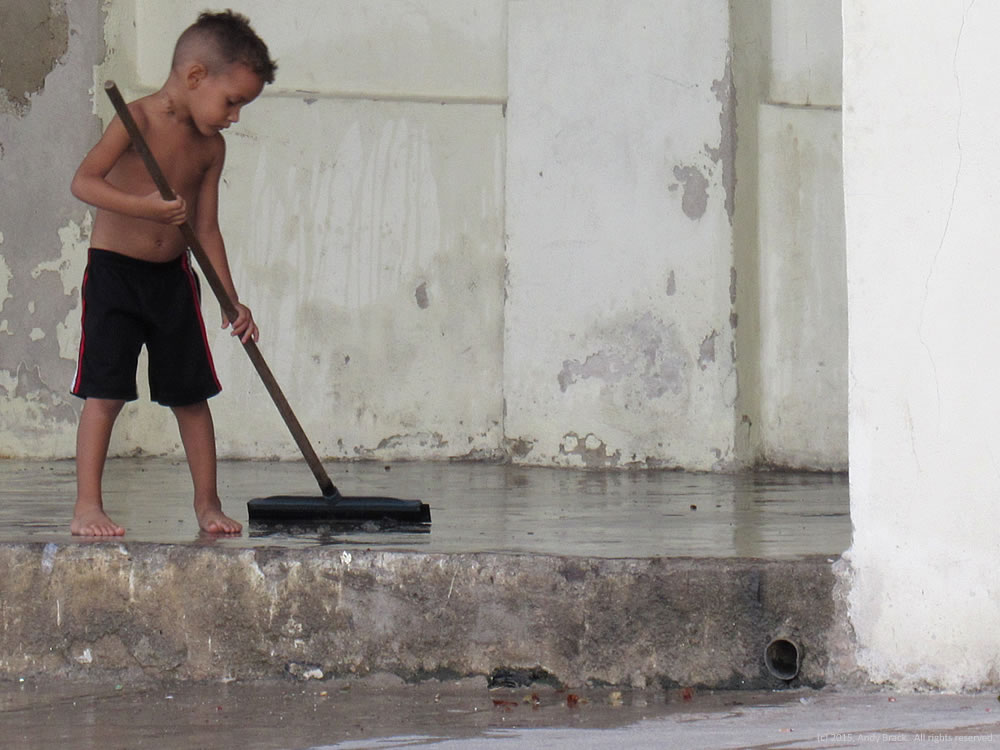
A boy sweeps water off a porch outside a decaying house facing the Malecon seawall that stretches for miles along the Havana coast.

People of all ages, such as these youths at dusk, gather along the Malecon all day to sit and take in the view.
GOOD NEWS
Avery Center to present camp meeting exhibition
A new exhibition of black and white photography of the history and traditions of camp meetings will open with a 7 p.m. reception on Sept. 3 at the College of Charleston’s Avery Research Center for African American History and Culture Center.
 “This Far by Faith: Carolina Camp Meetings, An African-American Tradition” will run through Jan. 25, 2016. The exhibition represents a 14-year journey of research, photographs, and audio and video footage by Minuette Floyd, associate professor of art education in the School of Visual Art at USC Columbia’s campus.
“This Far by Faith: Carolina Camp Meetings, An African-American Tradition” will run through Jan. 25, 2016. The exhibition represents a 14-year journey of research, photographs, and audio and video footage by Minuette Floyd, associate professor of art education in the School of Visual Art at USC Columbia’s campus.
Since 2001, Floyd has travelled to seven African-American campgrounds and captured the rich tradition through photography, video and oral interviews. The interactive exhibition, which consists of 42 large black and white photographs and has been displayed at the Charlotte Museum of History in North Carolina (2010), the Moore Methodist Center at St. Simon’s Island (2010), Georgia, and the McKissick Museum (2008) at the University of South Carolina. Her book, entitled, A Place to Worship: Carolina Camp Meetings, An African-American Tradition will be published in the near future through USC Press.
A graduate of Winston-Salem University, Floyd also holds a master’s degree from the University of North Carolina at Greensboro, and a doctorate degree from Florida State University. She currently is an associate professor at the University of South Carolina.
More good news:
Cannon Street Y All Stars: Several members of Charleston’s Cannon Street Y All Star team, civil rights heroes from 1955, were to travel over the weekend to Williamsport, Pa., to commemorate the 60th anniversary of their historic trip to the tournament. As guests of Little League, the former players will be recognized at the Little League World Series on the championship field.
In the summer of 1955, the Cannon Street team was the only African American organization in South Carolina that attempted to compete in Little League post-season play. All the white teams in the Charleston area refused to play the black team, and thereby forfeited the tournament. The Cannon Streeters could not find competition at the state or regional tournaments either, but were then forbidden to play in the Little League World Series. A Little League rule banned teams that advanced by forfeiture from playing in the World Series. Nonetheless, the players and their coaches took a bus to Williamsport and practiced on the baseball fields. But rather than competing they had to watch all the games from the stands. Little League has since included the Charleston team in its World of Little League Museum.
Players who were expected to make the trip to Williamsport are John Bailey, Allen Jackson, David Middleton, and John Rivers. Team historian Agustus Holt will accompany the team. For information on the Cannon Street Y All Stars, go to http://1955cannonstreetallstars.weebly.com.
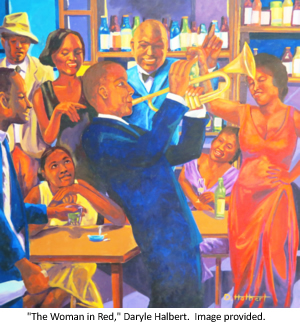 New artist. The City of North Charleston Cultural Arts Department has named painter Daryle Halbert as its 2015-16 artist in residence. Born in Detroit and trained there and in Washington, D.C., Halbert moved to Charleston in 2011. Recent paintings show Lowcountry scenes of cuisine, agriculture, music and folklore. An exhibition of his work will come in January at the city’s gallery. More: NorthCharleston.org
New artist. The City of North Charleston Cultural Arts Department has named painter Daryle Halbert as its 2015-16 artist in residence. Born in Detroit and trained there and in Washington, D.C., Halbert moved to Charleston in 2011. Recent paintings show Lowcountry scenes of cuisine, agriculture, music and folklore. An exhibition of his work will come in January at the city’s gallery. More: NorthCharleston.org
Big Joe winner. Hats off to LS3P President, CEO and Chairman Thom Penney, who will receive the Charleston Metro Chamber of Commerce’s 2015 Joseph P. Riley Leadership Award on Sept. 10. The annual award “celebrates a visionary leader doing extraordinary work to strengthen the community, who is also an outstanding community volunteer that has demonstrated a lifetime of leadership,” the chamber said. More: charlestonchamber.net/honorsnight
FEEDBACKThe flip side of a racial conundrum
To the editor:
When reading Kendra Hamilton’s column, I was reminded of a conversation I had a few years ago with an African-American co-worker. I’ve forgotten what it was we were discussing specifically, but whatever the conflict was, we were able to discuss it honestly and resolve it successfully.
![]() I looked at her and said, “Why can’t we have this sort of dialogue on a larger scale?” Her answer was telling. “Because you know I can’t tell this to my people.” It was the flip side of the racial conundrum described by Ms. Hamilton. My friend couldn’t go back to her “people” and admit that she’d actually interacted with a white person in a way that demonstrated that our skin colors were different was irrelevant. Tribal responses to fear, whether based in reality or superstition, are hard to expunge, especially when the differentiating tribal characteristics are so tangible, so visible, as skin color. Knowing this, the key is to find a “tribal” characteristic of a different sort.
I looked at her and said, “Why can’t we have this sort of dialogue on a larger scale?” Her answer was telling. “Because you know I can’t tell this to my people.” It was the flip side of the racial conundrum described by Ms. Hamilton. My friend couldn’t go back to her “people” and admit that she’d actually interacted with a white person in a way that demonstrated that our skin colors were different was irrelevant. Tribal responses to fear, whether based in reality or superstition, are hard to expunge, especially when the differentiating tribal characteristics are so tangible, so visible, as skin color. Knowing this, the key is to find a “tribal” characteristic of a different sort.
In that vein, I offer an example. It was 1980, and my best friend Jan, a young white woman, was a Head Start teacher. Easily 90 percent of her 20 young charges were black. At this particular Head Start, breakfast and lunch were provided, and the kids’ seats were assigned. From meal to meal, Jan would sit at a different table, making sure that she sat with all of the kids on a rotating basis. One day, she sat down at a table to overhear Charles, one of her four-year-old students say, “I hate white people.”
Knowing that he was simply repeating something he’d heard from someone else, Jan decided to probe a little. “Charles,” she said. “I’m white. Does that mean you hate me?”
It was obvious that the question took the little fellow by surprise, and for the next few seconds, he was silent, his little mind churning, as he tried to make sense of it all. Finally, his face brightened.
“You’re not white,” he said. “You’re my teacher.”
And a little child shall lead them …
— Vally M. Sharpe, Asheville, N.C.
Intimidation, ostracism certainly was around
To the editor:
Great piece by Kendra Hamilton on white victims of racial discrimination. That fear of intimidation and ostracism was certainly there.
— Chip Brown, Conway, S.C.
Send a letter and tell us what you really think. If you have an opinion on something we’ve offered or on a subject related to the Lowcountry, please send your letters of 150 words or less to: editor@charlestoncurrents.com. Our feedback policy.
CALENDARAug. 31+: Music, dancing, fair fun ahead
 (NEW) Lowcountry Jazz Festival: Sept. 3 to Sept. 6, North Charleston Performing Arts Center, 5001 Coliseum Drive, North Charleston. Fourteen different jazz acts are scheduled to perform over four evenings during the festival, which also includes a 9 a.m. Saturday panel discussion “Jazzing with Sugar,” to discuss health disparities. Learn more: LowcountryJazzFest.com
(NEW) Lowcountry Jazz Festival: Sept. 3 to Sept. 6, North Charleston Performing Arts Center, 5001 Coliseum Drive, North Charleston. Fourteen different jazz acts are scheduled to perform over four evenings during the festival, which also includes a 9 a.m. Saturday panel discussion “Jazzing with Sugar,” to discuss health disparities. Learn more: LowcountryJazzFest.com
Shaking a leg. It’s the end of the season for dancing at county parks with the summer’s last Shaggin’ on the Cooper on Sept. 12 and the final version of a Moonlight Mixer at the Folly Beach Pier set for Sept. 18. At each, a DJ will spin great old tunes to keep your feet moving. Click here for more.
Charleston Green Fair: Noon to 5 p.m., Sept. 20, James Island County Park. The 8th annual fair will offer lots of ways to learn about sustainability in day-to-day life. It will feature games, exhibits, contests, fitness opportunities, musical entertainment and much more. Admission is free with $1 gate admission. More.
(NEW) Author visit: 5 p.m., Sept. 21, Blue Bicycle Books, 420 King St., Charleston. Author Lee Robinson will read from her debut novel, “Lawyer for the Dog,” which is set in Charleston where she worked for years as a lawyer and was the first woman president of the Charleston County Bar Association. She now lives in Texas. More: BlueBicycleBooks.com
Chase After a Cure golf tournament: Sept. 25, Patriots Point Links, Mount Pleasant. The fourth annual Drive Away Childhood Cancer Golf Tournament will benefit Chase After a Cure, a Summerville nonprofit that funds childhood cancer research and raises awareness. Since 2009, the group has raised almost $1 million for research and equipment at MUSC. $400 a foursome. More info: http://www.chaseafteracure.com
Oktoberfest 5K Run-Walk: 9 a.m., Sept. 26, Laurel Hill County Park, Mount Pleasant. The East Cooper Breakfast Rotary Club will host this annual benefit trail run that features a German band, brats and a Bavarian beer garden to welcome participants to the finish line. Costumes encouraged. Learn more and register here: http://oktoberfest5k.net/
(NEW) Latin American Festival: 11 a.m. to 6 p.m., Oct. 4, Wannamaker County Park, North Charleston. The 24th edition of the festival will feature sensational sounds and vibrant performances from seven acts, including a 12-piece salsa band and urban group from Miami. Dance, art, food and children’s activities are also available at the event, which has an entry fee of $10 per person, with discounts to children, college students, seniors and military. More: CharlestonCountyParks.com
Zombie Pub Crawl: 6 p.m. to 11 p.m., Oct. 17, Park Circle, North Charleston. Holy City Brewing will present the fifth annual Pint of Home Zombie Pub Crawl to benefit Lowcountry AIDS Services. Attendees are encourage to dress in their most imaginative zombie gear and visit Park Circle restaurants and bars to check off scorecards for a grand prize. Tickets are $15 in advance; $20 at the door. More: HolyCityBrewing.com.
Bird walks: 8:30 a.m. to noon, every Wednesday and Saturday. This is the time of year that a great variety of migrating birds fly through the Lowcountry so what better time to take part in one of the regular early morning bird walks at Caw Caw Interpretive Center in Ravenel. Pre-registration is suggested. Cost is $5. Walks also are conducted on James Island and Folly Beach. Learn more online.
If you have an event to list on our calendar, please send it to editor@charlestoncurrents.com for consideration. The calendar is updated weekly on Mondays.
REVIEWHausfrau: a novel
By Jill Alexander Essbaum
![]() You would think that Anna, a 37-year-old American, would be a happy and content person. She’s married to a handsome Swiss banker, has a nice home, three beautiful children, and lives in one of the most beautiful countries in the world. However, Anna is miserable. She’s never learned Schwiizerdutsch, which is the language spoken in the Zurich region. It’s similar to German, but enough differences make it difficult to understand. She really hasn’t learned German either, even though she’s lived there for nine years.
You would think that Anna, a 37-year-old American, would be a happy and content person. She’s married to a handsome Swiss banker, has a nice home, three beautiful children, and lives in one of the most beautiful countries in the world. However, Anna is miserable. She’s never learned Schwiizerdutsch, which is the language spoken in the Zurich region. It’s similar to German, but enough differences make it difficult to understand. She really hasn’t learned German either, even though she’s lived there for nine years.
What is making Anna unhappy? Her husband is a cold person and not very understanding. Her mother-in-law, who babysits quite often for Anna’s children, is impatient and not a very warm and loving person. She’s made very few friends. Her therapist tries to encourage her to be more outgoing and participate more in Swiss culture and to make new friends.
In one of her loneliest, desperate periods she begins an affair with an American man. When he returns to America, she is devastated. In her German class she meets Archie from Scotland and begins another torrid affair. When she attends a party, she meets a friend of the family and has an affair with him. What are the consequences of having these affairs? What happens when a horrific tragedy occurs? Will Anna ever be happy?
— Susan McSwain, Mount Pleasant Regional Library, Mount Pleasant, S.C.
![]() Find this and similar titles from Charleston County Public Library. This item available as a book. To learn more or place a hold, visit www.ccpl.org or call 843-805-6930.
Find this and similar titles from Charleston County Public Library. This item available as a book. To learn more or place a hold, visit www.ccpl.org or call 843-805-6930.
Rabbits or snails?
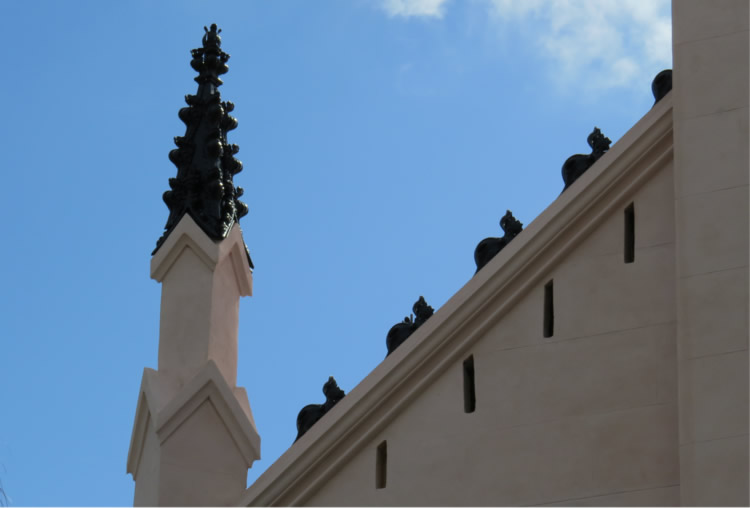 Contributing photographer Michael Kaynard jokes that the frills at the top of this Charleston building look like rabbits or snails. Seriously, where was this picture taken? (And for extra points, what are the frills?) Send your answer to editor@charlestoncurrents.com. Make sure to include your name and contact information, including hometown.
Contributing photographer Michael Kaynard jokes that the frills at the top of this Charleston building look like rabbits or snails. Seriously, where was this picture taken? (And for extra points, what are the frills?) Send your answer to editor@charlestoncurrents.com. Make sure to include your name and contact information, including hometown.
The last issue’s mystery photo was a capital — the top of a column — at the new Gailliard Auditorium in downtown Charleston. Hats off to Deborah Getter of Johns Island for winning the last pair of RiverDogs’ tickets this year. She wrote she “was just there taking pics and visiting the Theodora garden!” Others who correctly guessed the origin of the image were Judy Carberry of Charleston, Elizabeth P. Stevens of Mobile, Ala., and Chris Brooks of Mount Pleasant.
- Send us a Mystery Photo. Don’t rely on us to find neat, mysterious photos. If you have a picture with which you’d like to stump our readers, send it along to editor@charlestoncurrents.com. (Umm, make sure to tell us what and where it is because you might stump us too!)
Early South Carolina gardens
S.C. Encyclopedia | Both home and commercial gardening were essential to the survival of colonial settlements in South Carolina. Early commercial growing was limited to fruit and vegetable crops grown near towns, and consisted mostly of small plots surrounded by wattle or split rail “worm” fences. Home gardening included mostly food crops that could be pickled or stored dry, as the winter climate was too warm for root cellars. Few vegetables were eaten raw, and being more fibrous than today’s varieties, were usually overcooked. To this day, the term sallet or sallet greens is applied by some rural South Carolinians to greens grown to be cooked: mustard, turnip, and rape, for example.
Colonists from the Caribbean brought tropical food crops that thrived in South Carolina, as well as slaves who knew how to grow and prepare them. Sweet potatoes, okra, southern peas, sweet and hot peppers soon augmented cole crops such as cabbage and collards, and root crops that British settlers knew so well. Indian traders helped to introduce the food crops of Native Americans to colonists, most importantly the “Three Sisters”: maize (corn), beans, and squash. The corn was of kinds later known as “field corn” and was grown principally to be dried, stored, and shelled for winter use. Beans were grown mostly to be dried, shelled, and stored, sometimes with hot pepper pods to repel weevils. Squash varieties were mostly hard-shelled, winter-keeper types, not the early maturing “summer squash” that are so popular today. Settlers from France had a long history of eating fresh vegetables, especially salad greens, and they brought seeds with them. However, they had to learn the seasons in the Lowcountry before they could grow greens successfully.
Ornamentals came into colonial gardens more slowly than food crops. Curiously, during the period when early plant explorers such as André and François Michaux, John and William Bartram, Mark Catesby, and others were gathering seeds and starts of native American ornamental species to ship to England and the Continent, settlers were slow in introducing the same species into their landscapes. The Michaux garden grew for sale more than 450 varieties of mostly native species. Perhaps native ornamentals caught on slowly because only the landed elite among the settlers had much experience with ornamental crops or the leisure time to grow them. Some of the commoners had grown food crops in the “old country,” but others from large towns in England and from Ulster knew little or nothing about cultivating plants of any sort.
Seed production was difficult in the Southeast because of plant diseases and seed-eating insects that infested crops. Therefore even the colonists who had the foresight to bring seeds with them soon had to turn to seed and bulb companies in Europe for supplies. Bulbs reproduced somewhat better than seeds but kinds that could not adapt to the hot, humid summers soon disappeared.
Indigo, rice, and cotton soon produced wealth sufficient to fund the construction of fine homes and gardens, on plantations and in towns. The brick-walled Charleston garden of Henry Laurens, for example, measured 600 by 450 feet. Plantation gardens were much larger, especially those along the Ashley and Cooper Rivers, such as [Magnolia Plantation,] Drayton Hall and Middleton Place. DuBose Heyward described the Lowcountry gardens of South Carolina succinctly: “formal gardens blended from their very creation ordered lines with natural beauty, for even the most formal intentions failed to achieve the same results here amid wistful live oaks and Spanish moss, where forests were fragrant with magnolia and jessamine, as in the more sedate landscapes of northern Europe. So the English-planned gardens of Carolina grew and mellowed into gardens unlike any others in the whole world.”
– Excerpted from the entry by Jim Wilson. To read more about this or 2,000 other entries about South Carolina, check out The South Carolina Encyclopedia by USC Press. (Information used by permission.)
About Charleston CurrentsOUR UNDERWRITERS
Charleston Currents is an underwriter-supported weekly online journal of good news about the Charleston area and Lowcountry of South Carolina.
- Meet our underwriters
- To learn more about how your organization or business can benefit, click here to contact us. Or give us a holler on the phone at: 843.670.3996.
OUR TEAM
Charleston Currents offers insightful community comment and good news on events each week. It cuts through the information clutter to offer the best of what’s happening locally.
- Mailing address: O. Box. 22261 | Charleston, SC 29413
Phone: 843.670.3996
Charleston Currents is provided to you twice a week by:
- Editor and publisher: Andy Brack, 843.670.3996
- Contributing photographer: Michael Kaynard
- Contributing editor, real estate: Doug Holmes
- Contributing editors, seniors: Catherine LaFond, Mary Ross McQuage
- Contributing editor, money: Kyra Morris
- Contributing editor, Palmetto Poem: Marjory Wentworth
SUBSCRIBE FOR FREE
Subscriptions to Charleston Currents are free.
- Click here to subscribe.
- Unsubscribe. We don’t want to lose you as a reader of Charleston Currents, but if you must depart, please click here.


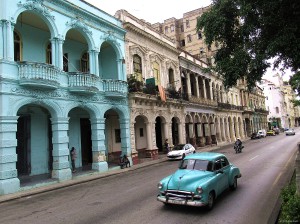



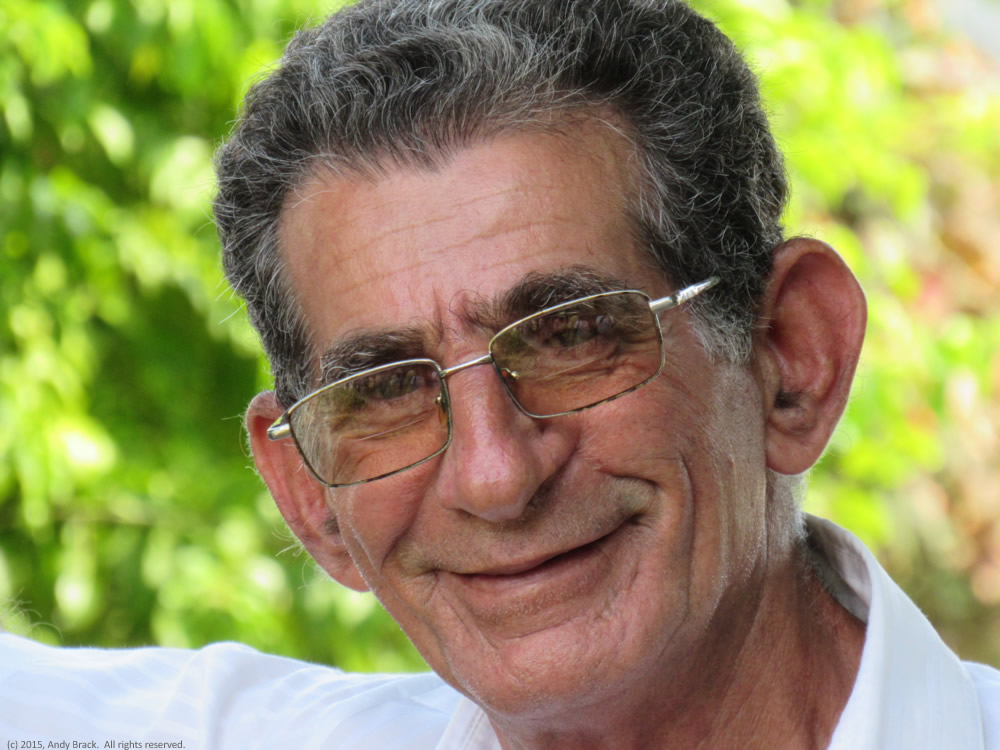
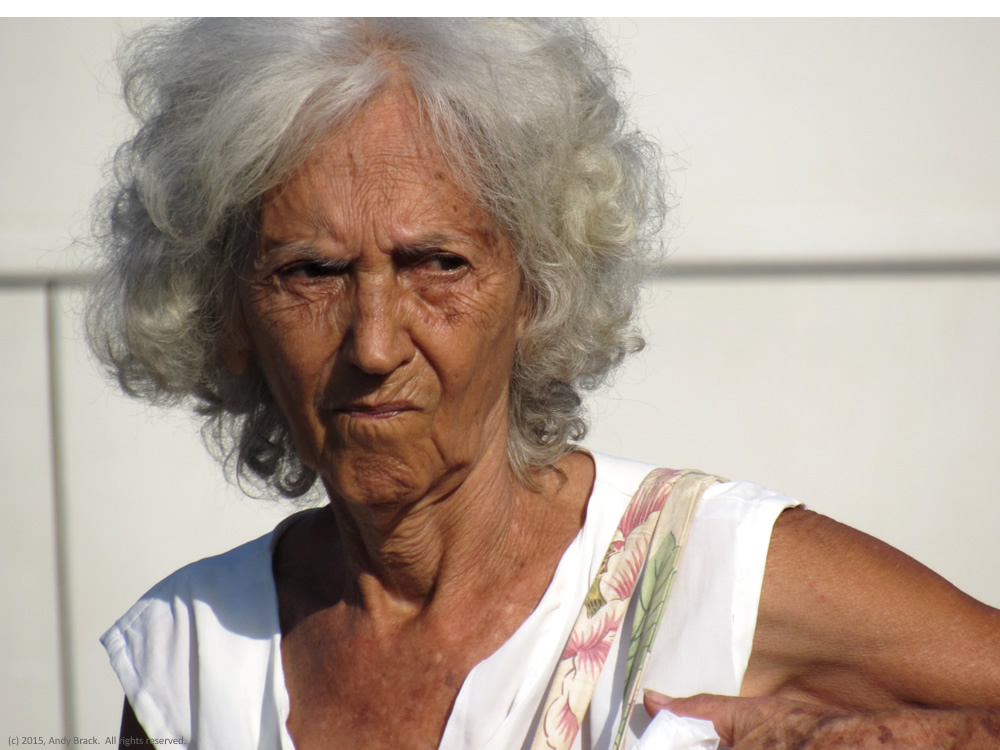
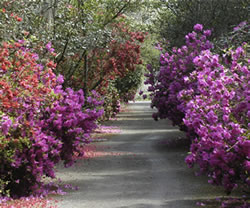

 We Can Do Better, South Carolina!
We Can Do Better, South Carolina!
























